2024 Chevy Colorado ZR2 Bison: Or, How I Learned To Stop Worrying And Love The Mid-Size Off-Road Truck
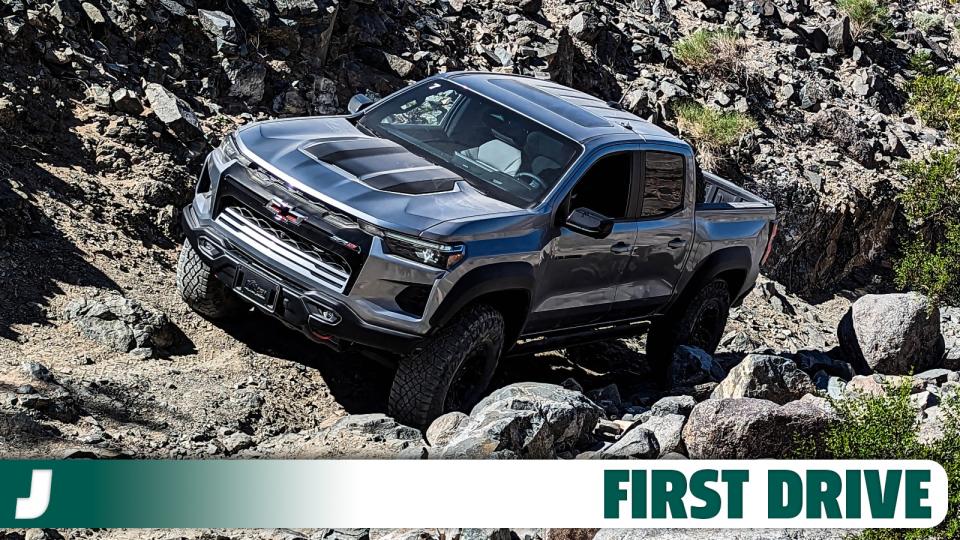
Hearing the crunch of a massive rock colliding with your truck’s undercarriage might be one of the foulest sounds in the world — but I found a place where it’s welcome. Last week, I had the opportunity to take a pre-production 2024 Chevrolet Colorado ZR2 Bison into the California desert for an off-road excursion, and after I cringed my way through my first few rock-crawling obstacles, I realized something: This may just be the one vehicle that can take my abuse and still make me feel like a driver who could traverse a mountain without issue. As a relative novice to the off-roading world, that’s a pretty damn good feeling to have.
Full Disclosure: Chevy invited me out to Palm Springs, California to get my hands on every member of the ZR2 off-roading family, including the Bison trims.
Read more
Returned Asteroid Sample Canister Contains Way More Asteroid Than Expected
Your Guide to October’s Much-Anticipated ‘Ring of Fire’ Solar Eclipse
Put simply, the Chevy Colorado is is a mid-size pickup truck that’ll compete with the likes of the Honda Ridgeline, Ford Ranger, and Toyota Tacoma, and last year, it underwent an overhaul to improve the chassis, powertrain, and interior — all of which has been refined in this second year of this generation.
The standard Colorado comes in six different trims, but today we’re focusing on the top-level trim, the ZR2 Bison. The 2.7-liter I-4 turbo is mated to an eight-speed automatic transmission, but the real juicy details start with the ZR2’s suspension – Multimatic DSSV dampers on all four corners. Those dampers are similar to the ones used on the Ford GT, Camaro ZL1 1LE and various other performance cars. When set up for off-road use, they provide excellent off-road performance and shockingly good handling on-pavement, which will come in handy considering the 35-inch tires make you feel fairly invincible whether you’re on the asphalt or off roading.
In Bison spec, you also get extra lift meaning, you’ll have 12.2 inches of ground clearance (compared to the 10.7 on the standard ZR2), with a 38.2-degree approach angle, a 26-degree departure angle, and a 26.9-degree breakover angle.
Plus, you’re getting a whole slew of accessories and protective armor developed by American Expedition Vehicles. The bottom of the truck is reinforced with steel skid plates while the bumpers are also reinforced to include winch and recovery capabilities.
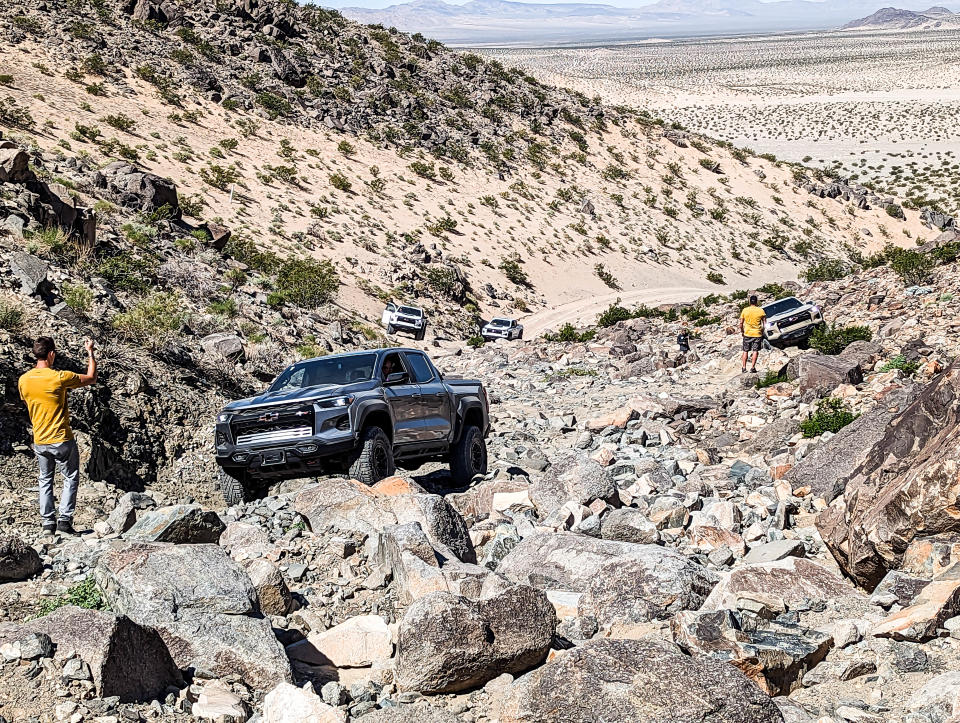
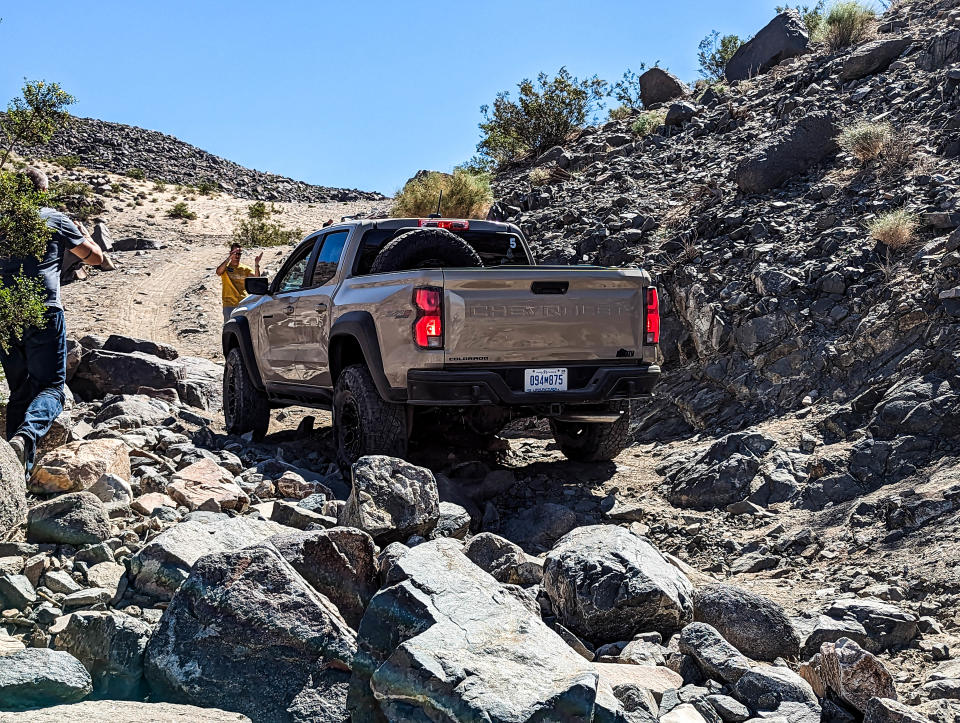
Driving Conditions
We took the 2024 Chevy Colorado Bison out for a day in the Johnson Valley desert, where we did some medium-speed driving through the sand, followed by a fairly challenging rock crawl. As far as off-road obstacles went, I’d classify our excursion as being of the “beginner, but with a smidge of experience” sort. We definitely needed Chevy’s spotters to help navigate some massive boulders, but we were by no means tackling anything remotely akin to the Upper Helldorado Trail in Moab — just enough to whet my appetite and leave me asking engineers how well the Colorado could stand up to a jump. (The answer, according to some of the engineers who have put this Colorado Bison through its off-road paces? Pretty damn well.)
The Colorado ZR2 Bison is also equipped with a bevy of drive modes, most of which we got a chance to experiment with, either on the trails or on the highway. They include:
Normal, for standard driving
Tow/Haul, which optimizes shifting points and throttle response when you’re hauling something
Off-Road, which is a general off-road mode for most basic off-asphalt driving
Terrain, which is designed for low-speed rock crawling
Baja, which is designed for higher speed driving in the sand; to turn it on fully, you need to select it on your drive mode knob, then further accept it on the infotainment screen. It is the only drive mode that requires this extra step.
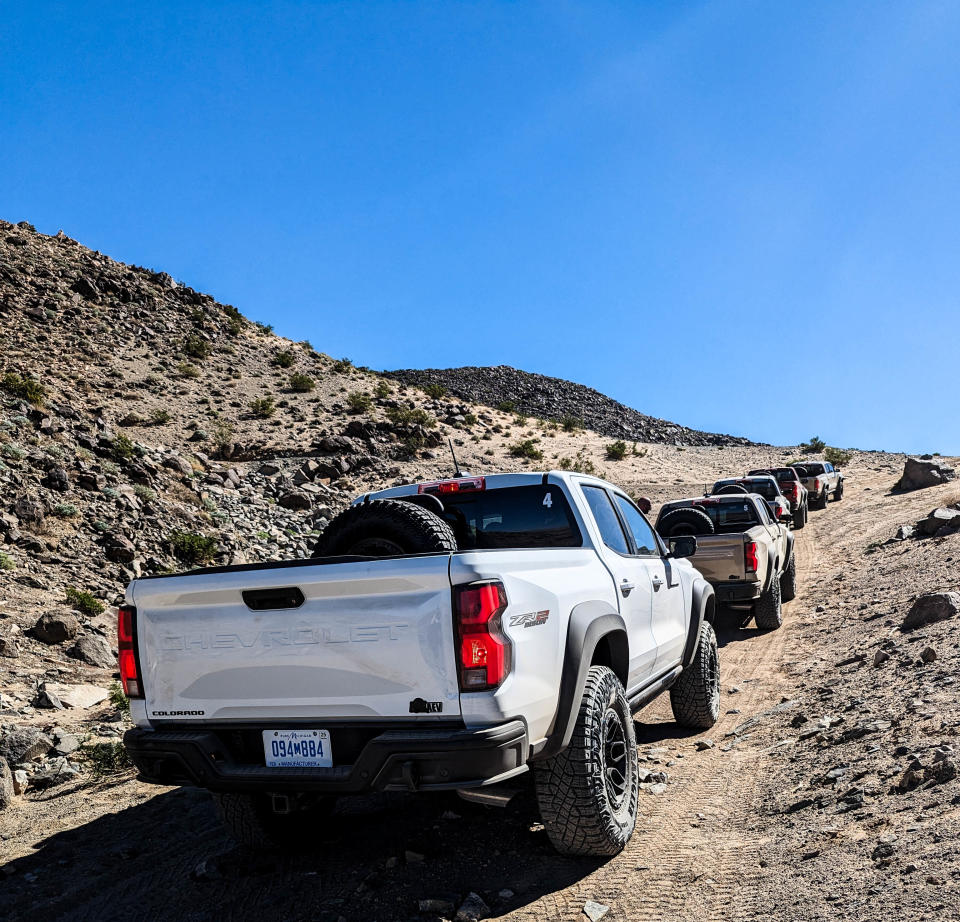
What’s Good
If you’ve only ever driven the previous generation of the Colorado (as I had before this trip), I need you to clear your mind of all your previous perceptions, because this truck has changed. The redesigned not only looks great, but it feels far more planted and comfortable than the previous generation — not to mention its improved exterior styling. The interior, too, feels like it joined the modern era; gone are the cheap-feeling cabin materials in favor of something that feels far more substantial. This truck is revamped and ready to carve itself a competitive new future.
I was also impressed with how well the lil truck handled the off-road portions of my drive. Of course, I had certain expectations considering the fact that the truck is literally designed to be one of the most capable off-road machines on the market — but it’s always nice to have those expectations met.
I was particularly a big fan of the smaller size of the truck. Obviously a mid-size pickup in 2024 is still large compared to trucks of the past, but the more compact package was confidence inspiring. Behind the wheel of a full-size truck, I often feel like I’m trying to steer the Ever Given through the Suez Canal, always three seconds away from some horrible disaster that will create the off-road equivalent of a shipping disaster. The Colorado isn’t exactly small, but its smaller size makes it feel nimble and secure as you maneuver over obstacles.
The different drive modes also made a huge difference in my off-roading comfort, in large part because the truck could help me tackle the specific terrains I was traversing. Selecting Baja mode before taking a medium-speed drive through the desert made the trek feel effortless. That’s because this mode reduces electronic stability control interference and activates Dynamic Performance Mode, which helps the transmission hold gears as you rapidly modulate the accelerator. Activate that mode, and you can cruise over the sandy desert floor with ease. Forget to turn it on (which I absolutely did after rock crawling), and the drive becomes infinitely more difficult to handle.
Terrain mode, meanwhile, is designed for rock crawling. It limits speed to 50 mph and can also apply the brakes on its own when it senses you need a hand. This gives you the ability to traverse large rocks, super rutted paths, or crawl up steep hills with comfort. One of my previous off-road experiences was behind the wheel of a very old Jeep Wrangler, and I spent most of that adventure clenching my buttcheeks and trying to only use my big toe to gently press the pedals. You could argue that Terrain mode removes all the “fun” of a more natural off-road experience, but as a relative novice, I was more than pleased to have a little help from the truck.
And if you’re worried that the Colorado ZR2 Bison won’t be comfortable on the highway because it’s set up for the trail — don’t be. I had a few criticisms I’ll get into below, but this is truly a chameleon-like truck in its ability to handle anything you throw at it with grace. You won’t feel out of place in a commuter situation, but your fuel economy will not be great.
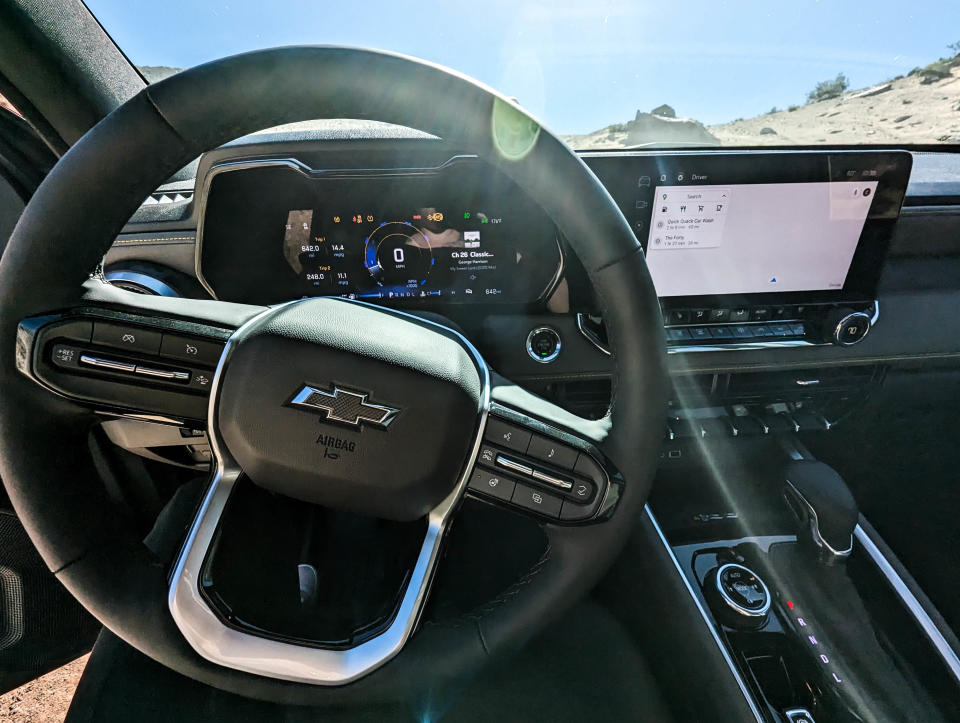
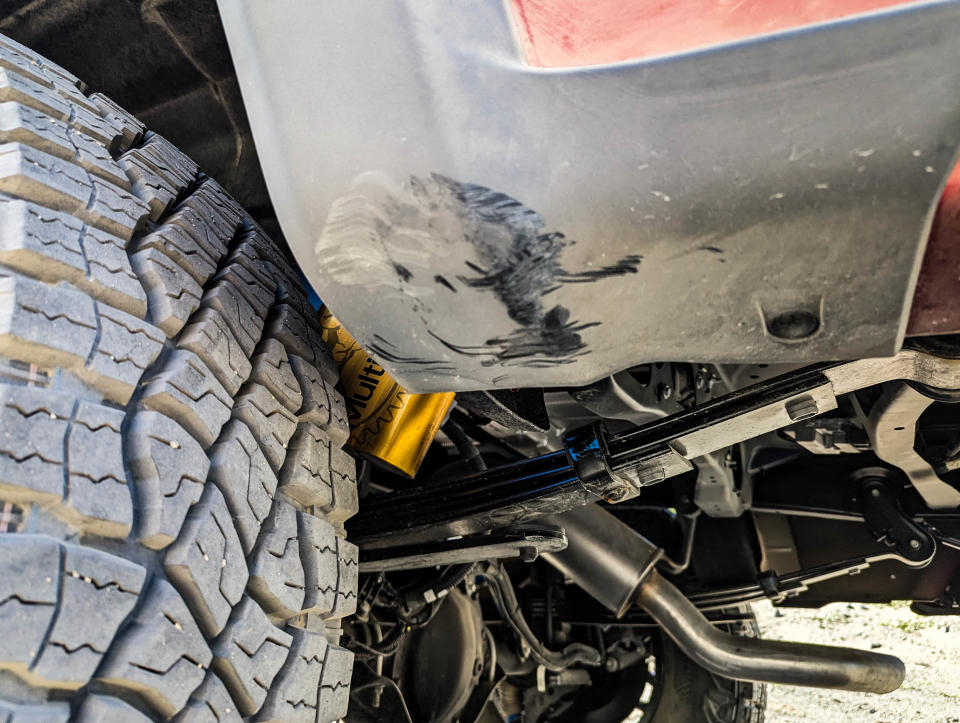
What Needs Work
Before we got behind the wheel, Chevy engineers warned us journalists that the Colorado Bison we were about to drive was a pre-production model, meaning that there would be some quirks and bugs that are still being worked out (such as, amusingly, the outdoor temperature gauge being stuck at 176 degrees). Between the car’s pre-production nature and our fairly abbreviated driving experience, it’s tough to have really gotten a sense of what doesn’t work.
But one of my main gripes was a lack of engine choice. Every single Colorado of this modern generation is outfitted with a turbocharged 2.4-liter I4 that makes 310 horsepower and 390 lb-ft of torque — numbers that are impressive, especially compared to some of the competition. The lack of any other option, though, is a bit frustrating. A diesel engine would offer more of the low-speed torque that could help the Colorado Bison tow and creep over obstacles, especially since I did notice a bit of turbo lag while trying to modulate acceleration. It didn’t ruin the experience by any means (or even make it any less enjoyable), but the ability to pick between a few options is always a win in my book.
I also found myself annoyed by a lack of physical buttons, knobs, or switches — and before anyone tells me that’s a boomerific complaint, I want to specify that I’m talking about things like toggling the headlights and fog lamps. To access those options, you have to dig into the infotainment menus, which is not something I was keen on discovering as I drove into a mandatory headlight zone. If this is the trade-off for getting physical buttons to control volume, then I have changed my mind: I would rather have an easily accessible way to turn on the lights.
And, lastly, the rear visibility was abysmal; this is a truck that desperately needs a digital rearview mirror. Because of the truck’s smaller size and the addition of those beefy tires, the spare tires are mounted on the back of the cab — right in the driver’s line of sight. You’ll want to make sure your side mirrors are properly positioned, because unless you’re tall, they’re going to be the only way for you to see behind you.
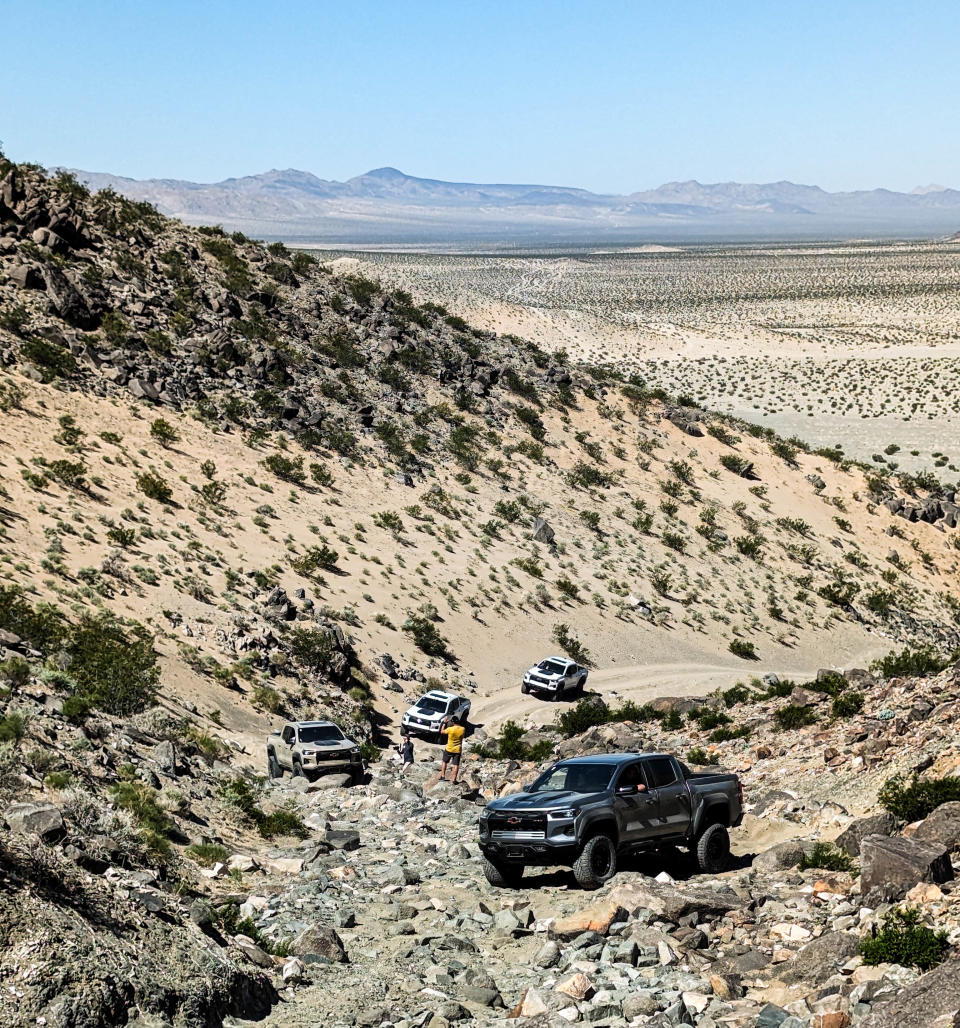
The Verdict
I try not to bubble over with unrestrained enthusiasm in any car review (especially for a pre-production machine), but I have to be honest: the 2024 Chevy Colorado ZR2 Bison is flat-out fun. I’m not the most avid off-roader and generally find myself riddled with anxiety in any situation that requires a skill I haven’t perfected, but this pickup truck was just about perfect when it came to making me feel at home behind the wheel. It wasn’t too big — which can be a real annoyance for someone of a shorter stature — and so I felt like I could keep my bearings. Plenty of cameras and specialized drive modes filled in the gaps made by my blind spots and my lack of experience. Finally, the fact that all of the truck’s weakest points are swathed in protective armor helped ease my worries about doing damage.
Is this a practical vehicle? Honestly, probably not — for most buyers, at least. If you need a truck that can occasionally haul some things and also take your kids to their favorite secluded camping spot, you’d be just as well off with a less impressive trim. If you’re like me and have no actual commute and really only drive to the grocery store, you definitely don’t need it.
But a truck like this isn’t about need. It’s more about want, and sometimes, I just really want to go bombing around Texas’ rural, pothole-ridden, flooded-out farm roads behind the wheel of a pickup truck that can handle my abuse. As a wise woman once said, girls just wanna have fun.
Pricing is still being determined, but the 2023 Colorado ZR2 trim started at $48,295; you can expect the more capable ZR2 Bison to command a far higher price. For reference, the 2023 Silverado ZR2 started at $73,345, while the Silverado ZR2 Bison started at $79,490.
More from Jalopnik
Sign up for Jalopnik's Newsletter. For the latest news, Facebook, Twitter and Instagram.

 Yahoo Autos
Yahoo Autos 